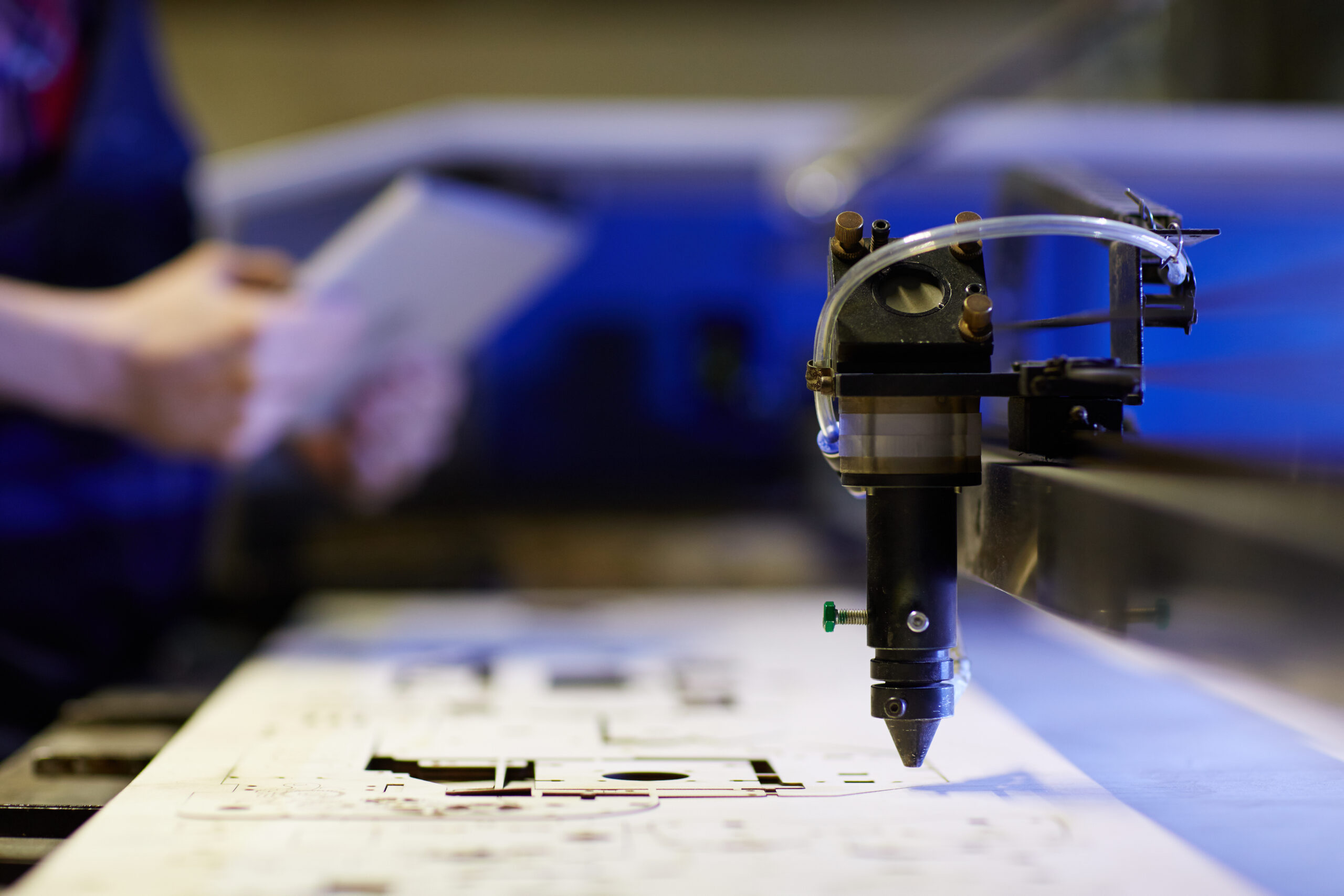You probably know Creality from their popular 3D printers, but did you know they’ve also made a significant splash in the laser engraving world? That’s where the Creality Falcon series comes in. These diode laser engravers promise powerful performance and user-friendly operation at an accessible price point. In this comprehensive review, I’m cutting through the marketing hype to give you an honest, in-depth look at the Falcon. Whether you’re a complete beginner, a seasoned hobbyist, or a small business owner looking to expand your capabilities, this review is for you.
First Impressions & Build Quality
Unboxing the Creality Falcon is a pleasant experience. The packaging is thoughtful, ensuring all components are well-protected. Assembly is surprisingly straightforward, usually taking under 20-30 minutes for even a novice. The instructions are clear, and the necessary tools are provided. Once assembled, the machine feels robust. It features a sturdy all-metal frame that instills confidence; this isn’t a flimsy piece of kit. The design is sleek and relatively compact for its work area, meaning it won’t dominate your workspace.
Key Features & Specs That Matter
Let’s dive into the core specifications that define the Falcon’s capabilities.
Laser Power & Type: Diode Strength
The Creality Falcon series primarily uses high-power diode lasers, available in various wattages (e.g., 5W, 10W, 22W, and even 40W on some newer models). Diode lasers are known for their efficiency, long lifespan, and compact size. Higher wattage directly translates to increased engraving speed and deeper cutting capabilities. Choose your power wisely based on your typical projects.
Work Area & Engraving Precision
Most Falcon models offer a generous work area, typically around 400x415mm or 400x380mm. This is ample space for most hobbyist and small business projects. The precision is impressive, allowing for incredibly fine details and repeatable results, critical for consistent output.
Focusing Made Easy
Creality understands that precise focusing is key to good results. Depending on the model, you’ll find features like a fixed focus, a simple manual lever for quick adjustments, or even auto-focus on the higher-end Falcon 2 models. This system makes getting a sharp laser dot surprisingly easy, even for beginners.
Crucial Safety Features
Creality has made safety a priority. The Falcon often includes features like an emergency stop button, tilt protection that halts operation if the machine is moved, and a flame detection system. Many models also feature a protective laser shield to reduce glare and offer some eye protection (though dedicated safety glasses are always a must).
Connectivity & Control Options
Flexibility is built-in. The Falcon supports USB connectivity to your computer and often boasts Wi-Fi capabilities, allowing for wireless control via Creality’s app or other compatible software. This offers great convenience and workflow efficiency.
Engraving Performance: Detailed Results
This is where the Falcon truly shines. I’ve tested it on a variety of materials, and the results are consistently excellent.
Material Test: What it Engraves
The Falcon handles a broad spectrum of engravable materials. On wood (plywood, pine, basswood), it produces crisp, detailed designs. It excels at engraving darker acrylics, leather, slate, anodized aluminum, and even paper and cardstock. The results are clean, with good contrast and minimal scorching when settings are optimized.
Speed, Detail & Image Quality
The engraving speed is competitive for a diode laser, especially on higher wattage models. You can achieve surprisingly intricate detail, making it perfect for custom logos, fine art, and tiny text. For photographic images, the grayscale capabilities are impressive, rendering smooth gradients and realistic tones.
Showcase: My Favorite Projects
From personalized cutting boards and custom leather patches to intricate slate coasters and anodized aluminum business cards, the Falcon consistently delivers professional-looking results. The detail on small engravings is particularly satisfying.
Cutting Performance: How Deep Can It Go?
While primarily an engraver, the Falcon’s cutting capabilities are a significant bonus.
Materials It Cuts Well
The Creality Falcon can cut various materials. It handles thin plywood (e.g., 3-5mm for a 10W, 8-10mm for a 22W), darker acrylics (again, typically up to 3-5mm depending on power), cardstock, felt, and thin foams. For clean cuts, an air assist attachment (often sold separately or included with newer models) is highly recommended.
Depth, Cleanliness & Passes
Realistic cutting depths vary significantly with laser power. Expect multiple passes for thicker materials. With proper settings and air assist, the edges are remarkably clean and consistent, though laser cutting always leaves a slightly charred edge on wood.
Speed vs. Quality Trade-off
As with any laser, there’s a balance between cutting speed and edge quality. Faster cuts often mean less clean edges or require more post-processing. Taking your time with optimized settings will yield superior, precise cuts.
User Experience & Software
Getting your hands dirty with the Falcon is a mostly positive experience.
Setup to First Engrave: Smooth?
Beyond the quick assembly, the initial setup to get your first engrave running is generally smooth. The included manuals or online resources walk you through the process, making it accessible even for those new to laser engraving.
Software: LightBurn & Creality
While Creality offers its own basic software (Creality Laser), I strongly recommend investing in LightBurn. It’s an industry-standard, powerful, and intuitive program that unlocks the Falcon’s full potential, offering unparalleled control over your projects. The Falcon is fully LightBurn compatible, which is a huge plus.
Beginner Friendly? Learning Curve
Yes, the Creality Falcon is remarkably beginner-friendly for basic operations. You can get quality engraves quickly. However, mastering advanced settings in LightBurn, optimizing material settings, and pushing the machine’s limits will, of course, involve a learning curve, which is typical for any creative tool.
Noise & Ventilation Needs
Like any machine with fans and a laser module, the Falcon isn’t silent, but it’s not excessively loud. More importantly, proper ventilation is absolutely critical. Laser engraving produces smoke and potentially toxic fumes. Always operate in a well-ventilated area, preferably with a fume extractor or enclosure leading outdoors.
Maintenance & Common Issues
Maintenance is minimal: primarily keeping the laser lens clean and occasionally checking belt tension. Common issues are usually setting-related (power, speed, focus) rather than hardware failures, and the strong online community offers plenty of support.
Falcon’s Pros & Cons: An Honest Look
No tool is perfect. Here’s my balanced take.
The Good: What I Loved
Robust Build Quality: Solid, all-metal construction for durability.
Accessible Price Point: Excellent value for the features and performance offered.
Impressive Engraving Quality: Produces crisp, detailed, and consistent results.
Good Range of Power Options: Allows users to choose the right machine for their needs.
User-Friendly Assembly & Operation: Great for beginners.
Essential Safety Features: Flame detection, tilt sensor, emergency stop for peace of mind.
LightBurn Compatibility: Opens up a world of powerful control.
The Bad: Areas for Improvement
Work Area: While decent, it’s smaller than some high-end competitors.
Included Software: Creality Laser is basic; LightBurn is a necessary upgrade (paid).
Noise Levels: While not extreme, the fans are audible during operation.
Ventilation: Absolutely essential and requires careful planning/accessories.
Air Assist: Often an add-on, but crucial for clean cutting performance.
Falcon 1, 2, or Pro: Which is for You?
The “Falcon” isn’t just one machine; it’s a series.
Creality Falcon 1: The original, typically lower wattage (5W, 10W), an excellent entry point for hobbyists on a tighter budget. Great for engraving and light cutting.
Creality Falcon 2: A significant upgrade. Usually higher wattage (22W, 40W), boasts faster speeds, integrated air assist, and enhanced safety features like multi-stage safety locks. Ideal for those who need more power, faster work, and more cutting capability.
Creality Falcon Pro: Often represents the top-tier of the Falcon 2 line, potentially with a larger work area, more robust components, or specific advanced features. It’s for serious hobbyists or small businesses needing maximum performance and reliability within the diode laser category.
Choose based on your budget, the maximum power and speed you need, and whether integrated features like air assist are critical from the start.
Falcon vs. Competitors: How It Stacks Up
In the crowded diode laser market, the Creality Falcon series holds its own against popular rivals like the XTool D1, Ortur Laser Master, and Atomstack models. The Falcon often distinguishes itself with a strong emphasis on safety features, a generally robust build, and Creality’s established brand reputation. For its price-to-performance ratio, especially with the Falcon 2 models, it’s a highly competitive option. It might not always have the absolute largest work area or cutting depth of every competitor, but its user experience and reliability are strong selling points.
Laser Safety: Don’t Skip This!
I cannot stress this enough: laser engraving requires serious safety precautions.
Eye Protection: Non-Negotiable
Always, always wear certified laser safety glasses specifically designed for the wavelength of your laser (usually 450nm for diode lasers). The protective shield on the machine is not enough. Your eyesight is priceless.
Proper Ventilation: Breathe Easy
The fumes generated during engraving and cutting are not healthy to inhale. Ensure you have excellent ventilation, whether it’s an open window, a dedicated fume extractor, or an enclosure ducted outdoors.
Fire Prevention: Stay Present
A laser can start fires. Never leave your machine unattended while it’s operating. Have a fire extinguisher or a squirt bottle nearby. Features like flame detection are a bonus, but active vigilance is your best defense.
Price & Value: Worth the Investment?
The Creality Falcon series offers compelling value for money. Prices vary significantly based on wattage and model, but you’re getting a well-built, capable machine from a reputable brand. For hobbyists, the entry-level models provide an affordable gateway into laser engraving. For small businesses, the higher-wattage Falcon 2 and Pro models deliver excellent performance without the prohibitive cost of CO2 lasers. Considering its features, build quality, and engraving results, I believe the Falcon is a solid investment. Factor in potential add-ons like an air assist pump and LightBurn software when budgeting.
Final Verdict & My Recommendation
The Creality Falcon laser engraver series is a fantastic contender in the diode laser market. It’s well-built, packed with thoughtful safety features, and capable of producing impressive engravings and cuts across a wide range of materials. It strikes an excellent balance between performance, ease of use, and affordability.
My recommendation? The Creality Falcon is an outstanding choice for beginners looking to dive into laser engraving, as well as intermediate hobbyists and small businesses seeking a reliable, powerful, and user-friendly machine. If you’re ready to create custom crafts, personalized gifts, or expand your product offerings, the Falcon series is definitely worth your consideration.
Where to Buy Your Falcon
You can typically find the Creality Falcon series directly on the [Official Creality Falcon Store] or through reputable online retailers like Amazon and specialized laser equipment dealers.

